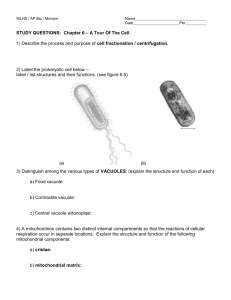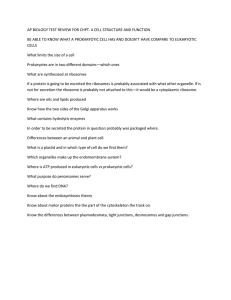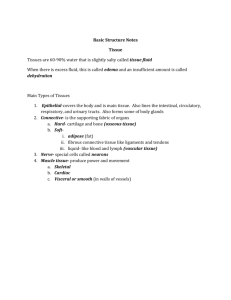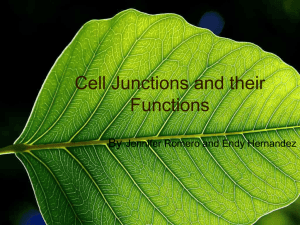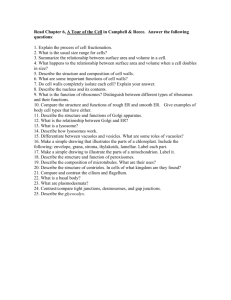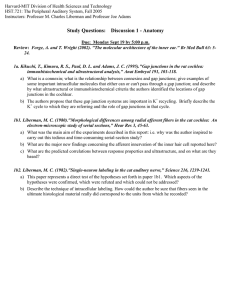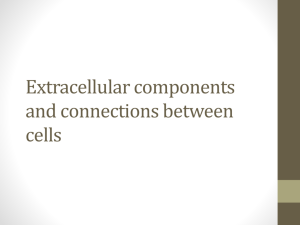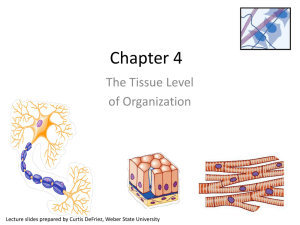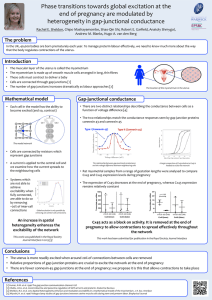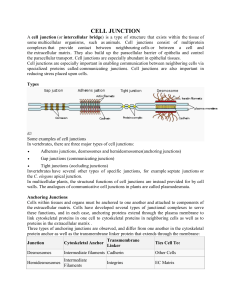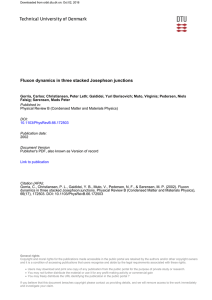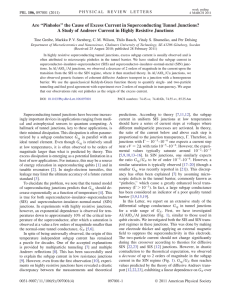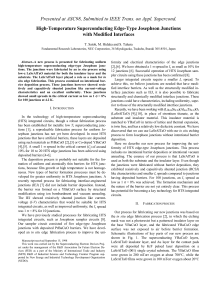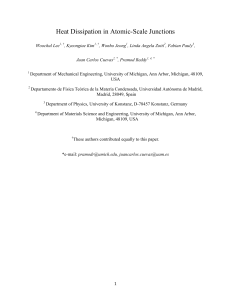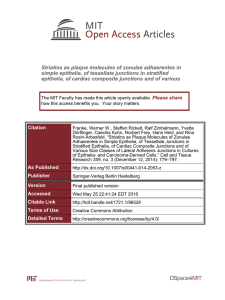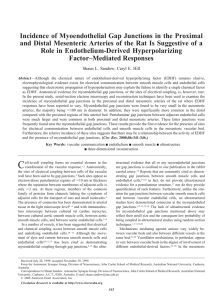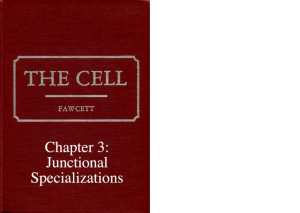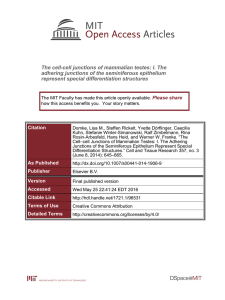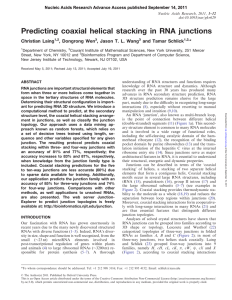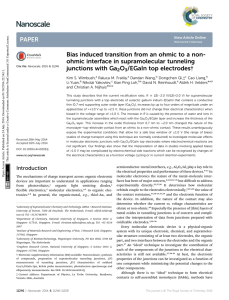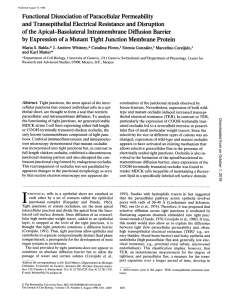Cell Junctions
advertisement
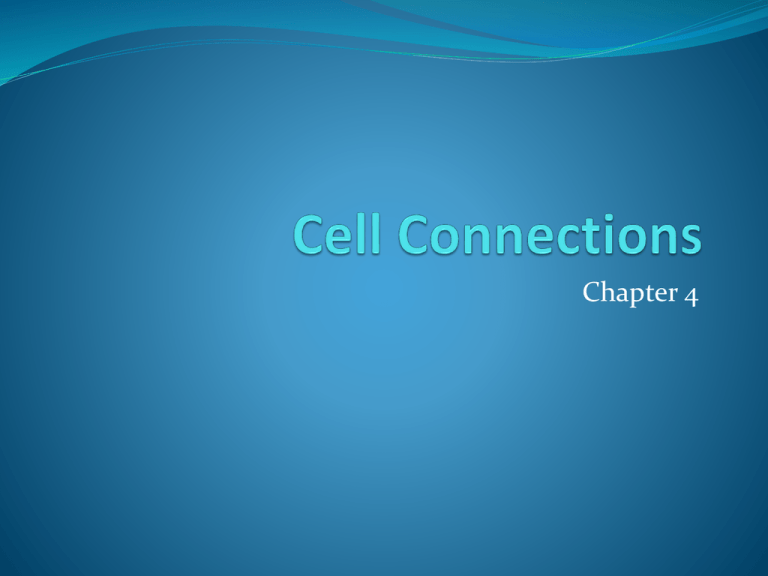
Chapter 4 4 major types of tissues Epithelial tissue- Covers surface of body, lines hollow organs and body cavities. Ex: Skin and stomach tissue Connective tissue- Holds organs in place, protects and supports body. Ex: Tendons and ligaments Muscular tissue- Generates physical force and movements. Ex: Biceps, quadriceps Nervous tissue- Helps control and coordinate body movement by detecting changes and responding with nerve impulses. Ex: Brain and spinal cord To function in a coordinated way as part of a tissue, cells must have cell junctions. Cell junction- points of contact between neighboring plasma membranes. Imagine trying to build a house with nothing to hold the lumbar, roof, and walls together. Plant cells Plasmodesmata- Channels between adjacent plant cells. They form a circulatory and communication system connecting the cells in plant tissues. *Helps water and small molecules pass easily from cell to cell. Animal cells Adjacent cells in animal tissues also connect by cell junctions; there are three types: Tight junctions Anchoring junctions (desmosomes) Gap junctions Tight junctions Bind cells very tightly together Forms a leakproof sheet Prevents passage of materials Lines digestive tract, preventing contents from leaking into surrounding tissues. Anchoring junctions Strongly link cells together with cytoskeletal fibers Forms strong sheets Common in tissues that have to stretch, such as skin and heart muscle. Helps keep skin cells from separating Ex: Desmosomes Gap junctions Channels similar to plasmodesmata in plant cells Allows small molecules to flow between neighboring cells. Important for chemical communication.

